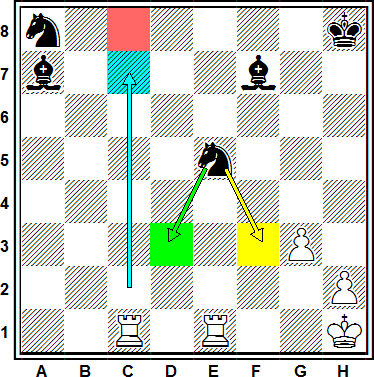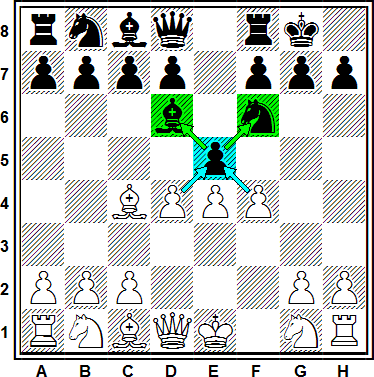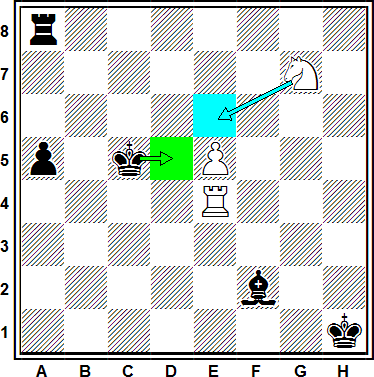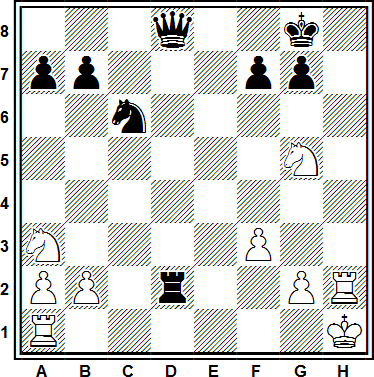| Idiot-proof chess help | |
Affiliates Navigation |
The Fork
When I tell you what one is, the reason for the naming of it should be obvious: it's a two-pronged attack, in which one piece attacks two or more enemy pieces. Here is an example:  If it is White to move, he can move his c1-rook to c7 (to fork the two black bishops) or c8 (to fork the black king and a8-kinght). If it is Black to move, he can use his e5-knight fork the two white rooks (by moving to d3) or to fork the e1-rook and the h2-pawn (by moving to f3). All of the pieces can fork (although knights are especially good for forking: their unusual type of move makes knight forks harder to see than forks with other pieces). Here is an example of a pawn fork:  Either White's d-pawn or f-pawn could capture Black's e5-pawn (as shown by the blue arrows), resulting in a fork against the d6-bishop and f6-knight (as shown by the green arrows). Here is a King fork:  Here, White foolishly gives check by moving his knight to e6. This allows the black King to fork the knight and the white rook by moving to d5. White is then forced to part with one of these pieces. Or is he? There are several ways out of a fork. Here are a few examples:
There are also other, less obvious ways, for example you pin the forking piece to the enemy king. If you don't know what a pin is, then look forward to my next tutorial. So, that's the basics of forking! Before we go, here's a fairly easy problem to solve:  It's White's move, and he has to avoid the checkmate threatened by Black (1....Rd1+ 2. Rxd1 Qxd1#). He can do so with a "petite combinaison" that involves a fork. Can you find it? Back to Tactics © 2004-2020 Chess Resources King. All rights reserved. |